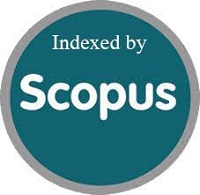Anxiety and Test Form: The Differences of Test Anxiety Levels in Terms of Test Form
DOI:
https://doi.org/10.15408/jp3i.v10i2.17974Keywords:
test anxiety, test form, multiple choice test, matchmaking testAbstract
Education is one of the most important aspects of human life. In the education file, examination is an important part to evaluate the progress of the students. The students need to fulfill the test parameters and indicators in order to move to the higher level of class or higher degree. The common feeling while students feel anxious in facing the test is called test anxiety. There are several factors that affect test anxiety, and one of the most common sources is the test form. This study aimed to determine the differences in test anxiety levels in students in terms of multiple-choice and matchmaking tests. The population of this study was 142 students of the Faculty of Psychology Education that registered in 2018. The design of this study was a quasi-experimental research with two-group pretest-posttest design. The instrument used in this study was the Reaction to Test scale by Irwin G. Sarason. The results showed that the multiple-choice test anxiety level was higher than the matching test, although the difference was small. The multiple-choice test anxiety level was (M = 2.17) and matchmaking (M = 2.07).References
Arikunto, S. (1992). Dasar-dasar evaluasi pendidikan. Jakarta: Bumi Askara
Ali, Linan (2012). Test anxiety may leave some students unable to achieve on exams. https://www.lcsun-news.com/story/life/wellness/2017/11/21/test-anxiety-performance-anxiety-students finals/800902001/
Anastasi, A & Urbina S. (1997). Psychological testing. USA:Prentice-Hall,Inc
Azwar, S. (2016). Tes prestasi , fungsi dan pengembangan pengukuran prestasi belajar. Yogyakarta : Pustaka Pelajar.
Azwar, S. (2018).Validitas & realibilitas. Yogyakarta : Pustaka Pelajar
Elfiana, Stephanie. (2005). Perbedaan kecemasan tes antara tes berbentuk pilihan ganda dan tes berbentuk esai. Jakarta: Fakultas Psikologi, Universitas Katolik Atma Jaya Jakarta
Febrayosi, Puti. (2012). Estimasi true score pada second order unidimensional data: sebuah studi simulasi monte carlo tentang dampak panjang tes, tingkat kesukaran, dan daya pembeda item. Jurnal Pengukuran Psikologi dan Pendidikan Indonesia. Vol 1(4) 243-262
Jumaeda, ST. (2016). Komparasi bentuk tes pilihan ganda dengan tes menjodohkan (matching test) ditinjau dari tingkat kesukaran pada mata pelajaran bahasa Arab di MAN Waimital Kabupaten Seram bagian barat. Keguruan Institut Agama Islam Negeri Ambon. Vol.1, No.1, 55- 71. STAIN Samarinda.
Jihad, Asep & Abdul Haris. (2008). Evaluasi pembelajaran.Yogyakarta: Multi Pressindo
Kubiszyn, Tom & Gary Borich. (2003). Educational testing and measurement: classroom application and practice. India: Replika Press
Kuechler, W. L. & Simkin. M. G. (2003). How well do multiple choice tests evaluate studentunderstanding in computer programming classes? Journal of Information Systems Education. West Lafayette: Winter 2003. Vol. 14, Iss. 4; p.389
Lynn Miller. Test Anxiety. Cited on October 1, 2018, https://www.anxietycanada.com/sites/default/files/Test_Anxiety_B ooklet.pdf
Naga, Dali S. (2010).Ukuran efek dalam laporan hasil penelitian
Pamphlett, R., & Farmill, D. (1995) Effect of anxiety on performance in multiple choice examination. Medical Education. 29 (297-302)
Penn State University. (2017, March 15). personal.psu.edu. Cited on October 1 2018, http://personal.psu.edu/bxb11/Q uizQuestions/QuizQuestions5.ht ml
Reber, Arthur S., & Reber, Emily S. (2001). Dictionary of psychology: Third Edition. London: Penguin Books
Reynolds, Cecil R, Ronald. B Livingston, Vivor Willson. (2009). Measurement and assessment in education. United States of America: Pearson
Revilla, Lina. (2009). Kecemasan menghadapi tes (test anxiety) dan dampaknya terhadap aktivitas belajar. Samarinda: STAIN Samarinda
Rest, Dehef H, & Franz J.Schermer. (1986). Reaction to Tests (RTT) Manifestations of Test Anxiety “(Dai- MAN): Same or Different Concepts? P.114-129
Sarason, G. I. (1977). The test anxiety scale: concept and research. Washington: Departement of Psychology
Sarason, Irwin G. (1982). Stress, anxiety, and cognitive interference: reaction to test (RTT). Washington: Departement Of Psychology, University Of Washington
Sarason, I. G., & Sarason, B. R. (1990). Test anxiety. In H. Leitenberg (Ed.), Handbook of social and evaluative anxiety. 475–496. New York: Plenum Press
Sakti, Kartika Oktaviani & Yuliatri Sastrawijaya. (2017). Bentuk tes objektif dan kecemasan pada pembelajaran membaca huruf hiragana bahasa jepang. Jakarta: Universitas Negeri Jakarta
Sangaji, Etta Mamang, & Sopiah. (2010). Metode penelitian. Andi: Yogyakarta
Sobur, Alex. (2016). Kamus psikologi. Bandung: Pustaka Setia
Suryaratri, Ratna Dyah & Anna Armwini Rangkuti. (2015). Statistika deskriptif, “untuk psikologi dan pendidikan”. Jakarta: Prodi FIP-UNJ
Seniati, Liche, Aries Yulianto, & Bernadette N. Setiadi. (2011). Psikologi eksperimen. Jakarta: Indeks
Shechter, M., & Zeidner, M. (1990). Anxiety: Towards a decision-theoretic perspective. Journal of Mathematical and Statistical Psychology, 43, 15-28
Raju, P. Mohan, Misganaw, Mesfin., & Esa Alia. (2010). Test anxiety scale: reliability among ethiopian students. Psychological Reports,107,3,939-948
Tarigan, Mitra. Ini kecurangan ujian nasional 2015 versi sekretaris jenderal federasi serikat guru indonesia (FSGI). Cited on 4th November 2018. https://nasional.tempo.co/read/65 8121/ini-kecurangan-ujian- nasional-2015-versi- fsgi/full&view=ok
Zeidner, M (1998). Test anxiety: the state of art. New York: Kluwer Academic /Plenum Publishers
Zeidner, M. & Gerald, Matthews. (2003). Test anxiety: encylopedia of psychological assessment. London: Sage Publication,965-969. http//dx.doi.09/10.1135/9780857 025753.n2



